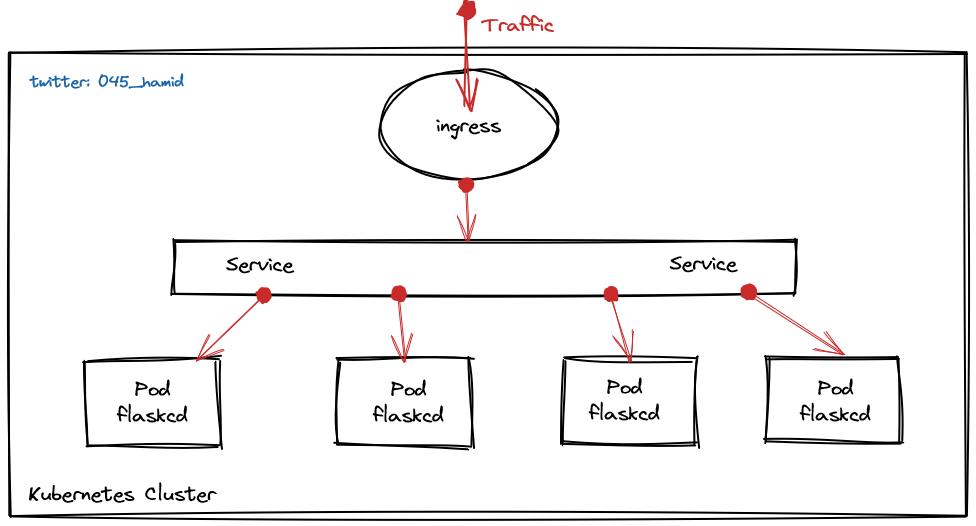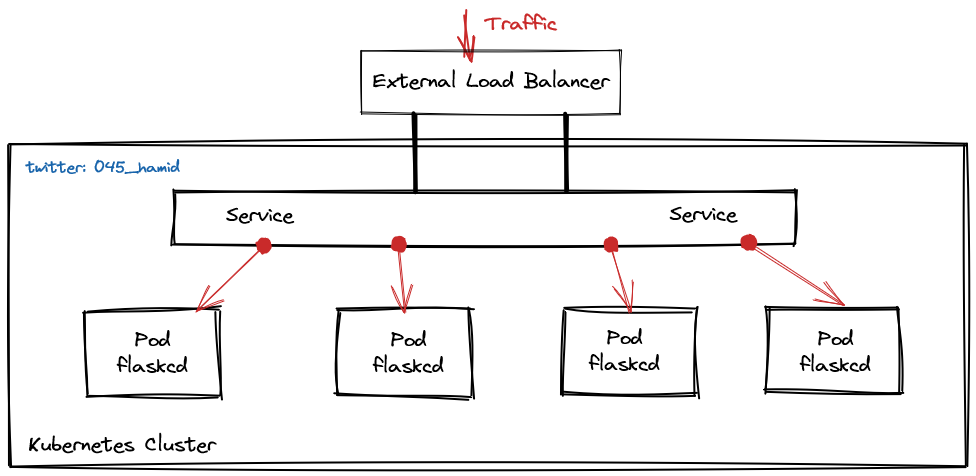Simple WEB APP by Flask and Deploy on Kubernetes
This is a web application project which is written by Flask.
Also there are some practices regarding creating infrastructure as code (Terraform, Ansible, Vagrant)
and installing kubernetes cluster (via ansible-playbook) and preparing CI/CD pipline for deploying the application on k8s cluster.
Docker Image
docker build -t flaskcd:latest .
Also prepared docker image is accessed.
docker pull hamidgholami/flaskcd:latest
Create a container from the image.
docker run --rm --name my-flask -d -p 8080:8080 flaskcd
Now visit http://localhost:8080
Verify the running container
Verify by checking the container IP and hostname (ID):
docker inspect -f '{{range .NetworkSettings.Networks}}{{.IPAddress}}{{end}}' my-flask
docker inspect -f '{{ .Config.Hostname }}' my-flask
Terraform
terraform destroy -var-file=dev.tfvars
terraform plan -var-file=dev.tfvars -out devtfplan.out
#
terraform apply "devtfplan.out"
Ansible
First change the IPs in inventory file.
[machine]
master ansible_host=192.168.11.X
worker-1 ansible_host=192.168.11.X
worker-2 ansible_host=192.168.11.X
[kuberlab]
master
worker-1
worker-2Afterwards run ansible-playbook
ansible-playbook -i provisioning/inventory site.ymlDeploy on Kubernetes
kubectl apply -k kubernetes/Load Balancing
For aiming to this we can use 2 kinds of architecture.
- Scenario One We can use Kubernetes
ingressandservicefor loadbalancing traffics onPods.
- Scenario Two We can use an external loadbalancer such as:
HAProxy,AWS ALB,NGINXor any other tools and loadbalancing traffics onPods.
TO DO
Preview
- Adding DB (
MySQL) and connecting the application to it and adding some forms in application. - Creating a
StatefulSetforMySQLfor deploying it on Kubernetes.- Configure clustring for
MySQLin Kubernetes.
- Configure clustring for
- Implementing
ROOKorlonghornas aStorageClassin Kubernetes. - Configuring
provisioninTerraformfor usingansible-playbookfor installing Kubernetes. - Creating
helmchart for DB and APP. - Adding
Sign Upin WEB APP through eitherAWS Cognitoor internally.

